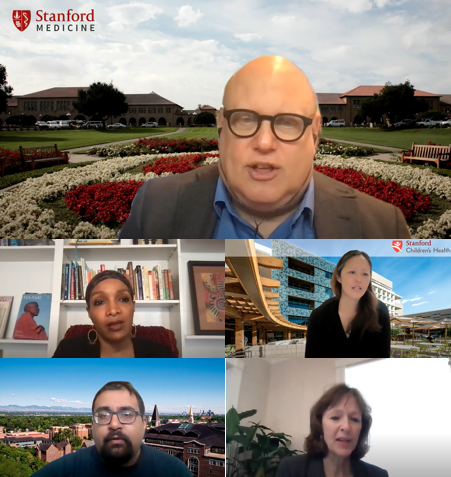On Sunday, vaccine eligibility at Santa Clara County will expand to essential workers in the education, childcare, food, agriculture and emergency services sectors. As vaccines begin to roll out, how do federal administrators ensure that those who need them the most get them in time? The answer isn’t as straightforward as it seems.
At Stanford, new eligibility guidelines have allowed student staff members to schedule appointments for their first dose of the coronavirus vaccine, though there is still uncertainty regarding when all professors and custodial staff can schedule appointments.
David Magnus, editor-in-chief of the American Journal of Bioethics, explained in a Feb. 17 vaccine allocation webinar that state-to-state differences and logistical challenges bring forth important ethical tensions, including those surrounding equity and efficiency.
The high rate of vaccine distrust among ethnic communities and communities of color — who are among those hit hardest by the pandemic — prompted the webinar. Magnus was joined by three other panelists including Emory University ethicist Kathy Kinlaw, University of Denver assistant law professor Govind Persad, University of Chicago assistant medicine professor Monica Peek and Stanford pediatrics professor Grace Lee.
The vaccine distribution strategy is a dynamic process, Peek said. Changes are made as new information unfolds.
“The issue is so complex,” Peek said. According to Peek, ensuring equitable vaccine distribution is currently the most challenging issue facing the country.
There are at least three salient principles to vaccine allocation, according to Persad. The first of these principles is harm prevention, which is not just about minimizing death, but also hospitalization and long-term medical complications. The second principle is health equity and disparity reduction.
“Special attention should be paid to trying to mitigate the impact of COVID-19 on groups that have been systematically disadvantaged through sources like geographic, vulnerability and disadvantaged structural racism,” he said.
The last principle is equal treatment, or grouping people based on how much harm can be prevented by receiving the vaccine.
The principles proposed by Persad align with the Center for Disease Control and Prevention’s Advisory Committee on Immunization Practices guidelines, Kinlaw said. Kinlaw also pointed out that among the top priorities, the vaccine distribution effort should work towards maximizing benefits and minimizing harm, mitigating inequities, promoting justice and providing transparency along the way.
Equity and efficiency are two major concerns relating to the ethics of vaccine allocation, according to the panelists.
“We know that there was $10 billion invested by the US Government in vaccine development and, in contrast … there was only a few hundred million invested in vaccine delivery,” Lee said. When it comes to getting the vaccine to people, she said “efficiency is not the only goal, equity should also be the goal.”
Quickly getting the vaccine to people who are at very low risk of disease complications or transmission is not efficient, according to Persad. It especially is inefficient in preventing infection, hospitalization or death.
“Speed doesn’t matter in itself. Speed matters because it’s one variable that helps to contribute to benefiting people’s harm reduction,” he said.
When it comes to deciding vaccine eligibility criteria, Persad suggested that a risk-based approach be adopted instead of a population-based approach. This means that more focus is placed on people who have overlapping risks of complications and infection, such as older people who live in crowded housing or elderly individuals who are medically vulnerable.
The concern with a population-based approach is that it puts too much emphasis on certain groups of people, Peek said.
“It’s not race, it’s racism that puts a person of color at increased risk of COVID,” she said.
Distributing the vaccine in an equitable manner does not mean we single out a particular racial group: “It’s all of the people who have this increased risk,” she said.
Because the population distribution differs in each state, a more tailored distribution strategy will be needed, according to Peek. She pointed to Chicago as an example, stating that the areas where disease prevalence is highest are those that should have the highest supply of vaccines.
“If we’re equally spreading out vaccine distribution, then that means that there are some neighborhoods that are under-resourced and so we’re not getting equity fast enough,” she added.
Proactive and intentional outreach is one strategy to achieve equity, according to Persad.
“Instead of [a] passive, first-come-first-serve [strategy], reach out proactively to people who are facing overlapping risks within [the] eligibility pool,” he said, explaining that this outreach can often be done by phone calls or direct communication.
“In certain counties, 73% of African Americans don’t have access to the Internet, and so then what looks to be race-neutral policies have devastating effects on the lives of Black and Brown people,” Peek added. “We have to actively counter what appears to be race neutral or equity blind policies with equity.”
Another way to proactively reach out to marginalized communities is by decentralizing vaccine administration sites. Kinlaw suggested that partnering with trusted representatives who have established relationships with these communities could help build trust.
As to whether it is possible for someone to forgo their dose for another individual, Persad reminded the audience that the vaccine is a public health intervention — not a medical intervention.
“A big reason why we might give somebody a vaccine is to help their community or to help their patients,” he said. This is to highlight that the vaccine’s benefit for the community outweighs the motivation for individual benefits.
To do that, Peek said, the focus now is “to use the limited resources we have and push those into high need areas.”
